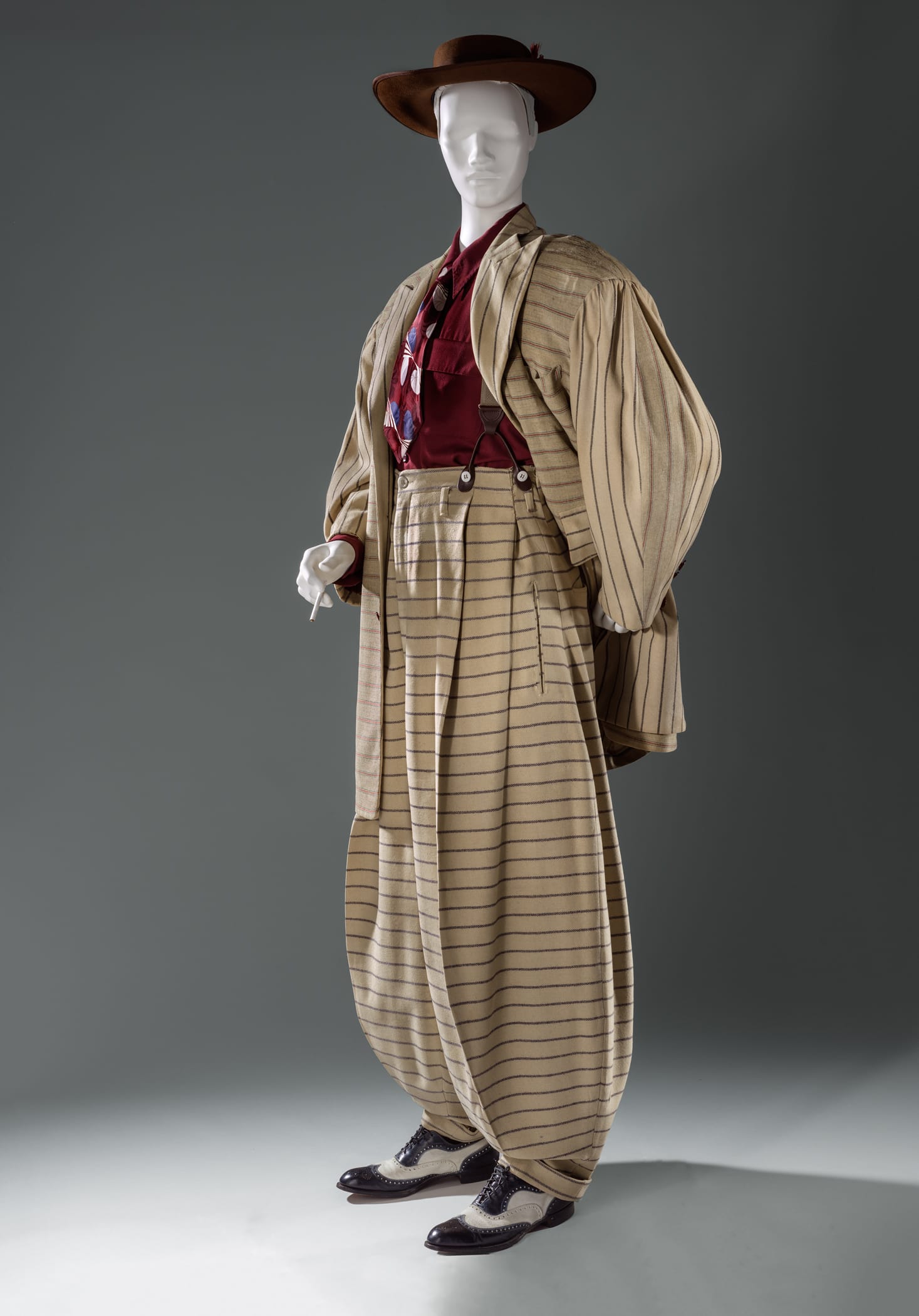The zoot suit: More than just fashion, it was a symbol of rebellion, cultural pride, and resistance against societal norms. From Harlem dance halls to Hollywood screens, the zoot suit’s extravagant style left an indelible mark on 20th-century fashion and culture. Discover the history of the zoot suit, from its origins in African American communities to its adoption by other cultures, and explore where to find authentic and modern interpretations today. The Zoot Suit Riots of 1943 serve as a dark chapter in American history, highlighting racial tensions and the power of clothing as a cultural identifier.
The Birth of Cool: Origins and Evolution
The zoot suit’s story begins in the mid-1930s, emerging from the loose “drape suits” popular in Harlem’s vibrant jazz scene. Imagine a smoky dance hall, the rhythm of swing music pulsing through the air, and dancers gliding across the floor in these flowing garments. This was the birthplace of cool, the genesis of an iconic style. African American communities, particularly in cities like Chicago and Detroit, embraced the drape suit, adding their own unique flair and setting the stage for the zoot suit’s dramatic entrance. These early adopters laid the foundation for what would become a powerful symbol of cultural pride and resistance.
Key Figures and Early Influences
- Cab Calloway: A true embodiment of zoot suit swagger, Calloway’s flamboyant stage presence and impeccable style helped popularize the look.
- Harold “Buster” Ramirez: Though the exact origins are debated, some suggest Ramirez popularized “zoot” within the Los Angeles Pachuco culture.
- 1930s Harlem Dance Halls: These vibrant hubs of music and fashion served as incubators for the evolving zoot suit style.
Anatomy of a Zoot Suit: Defining Features
What exactly is a zoot suit? It’s an exercise in exaggeration, a bold statement made in fabric and form. Here’s what sets it apart:
The Essentials
- High-Waisted Trousers: These trousers, cinched high at the waist, billow outwards with generous fabric before tapering dramatically at the ankles, creating a distinctive drape. Ever wondered what’s inseam? These trousers definitely have a story to tell.
- Long Coat: With padded shoulders that emphasized breadth and wide, dramatic lapels, the zoot suit coat extended almost to the knees, adding to the overall imposing silhouette.
- Accessories: The details mattered. A fedora, often cocked at a stylish angle and sometimes adorned with a feather, completed the look. Pointed shoes, often two-toned, added a final touch of flair.
Fabrics and Colors
- Bold and Vibrant: Zoot suits were often made from brightly colored fabrics, featuring patterns like pinstripes and checks, standing in stark contrast to the more subdued palettes of the time.
- Wool: Though wartime rationing made wool a precious commodity, it was the preferred fabric for the zoot suit’s distinctive drape.
The Zoot Suit Riots: A Clash of Cultures
The 1940s brought World War II and an era of rationing and austerity. The zoot suit, with its extravagant use of fabric, became a target. In 1943, Los Angeles erupted in violence. The Zoot Suit Riots saw American servicemen attacking Mexican American youth wearing zoot suits, fueled by a mix of wartime anxieties, racial prejudice, and resentment toward the suit’s perceived defiance of wartime norms. The riots tragically exposed the deep-seated racial and social tensions simmering beneath the surface of American society.
Zoot Suit Swagger: Style and Influence
Despite the violence and controversy, the zoot suit’s influence continued to grow.
Music and Dance
- Jazz and Swing: The zoot suit became synonymous with the energy and rebellion of these musical genres. Think of Cab Calloway, a true icon of zoot suit style. You might be surprised to learn why did Elvis call Priscilla “Satnin”? It offers a glimpse into another era of distinctive style.
- Jump Blues: This energetic and often rebellious music further cemented the zoot suit’s connection to youth culture.
Film and Literature
- “Zoot Suit” (1981 film): This film brought the story of the Zoot Suit Riots to a wider audience, solidifying the suit’s place in cultural history.
- Literature of the era: Authors like Langston Hughes captured the vibrant energy and social significance of the zoot suit in their works.
The Zoot Suit Today: A Timeless Legacy
The zoot suit’s legacy endures. From subtle nods in contemporary fashion to full-blown revivals, its influence can still be seen today.
Modern Interpretations
- Runway Influences: Designers occasionally draw inspiration from the zoot suit’s exaggerated silhouettes and bold colors.
- Subcultures and Individual Style: The zoot suit continues to be embraced by those who appreciate its history and rebellious spirit.
Rock the Look: Styling Tips for the 21st Century
Want to incorporate a touch of zoot suit swagger into your wardrobe? Here’s how:
- Start Small: A high-waisted trouser or a wide-lapelled blazer can hint at the zoot suit’s distinctive silhouette without going full retro.
- Accessorize: A fedora, pocket square, or even a bold tie can add a touch of vintage charm.
- Modernize with Fabrics: Choose contemporary materials and colors to give the look a fresh update.
Where to Buy Your Zoot Suit
Finding a zoot suit today might require a bit of a treasure hunt, but the rewards are worth it.
- Online Retailers: Several online stores specialize in vintage-inspired and custom-made zoot suits.
- Specialty Vintage Stores: These can be excellent sources for authentic vintage zoot suits, but be prepared for higher prices.
- Custom Tailors: For a truly unique and perfectly fitted zoot suit, consider having one custom-made.
The Enduring Power of the Zoot
The zoot suit is more than just an outfit. It’s a story of rebellion, cultural pride, and the power of self-expression. It’s a reminder that fashion can be a powerful tool for social and political commentary, and its legacy continues to inspire today.
- Unlock Black Pepper’s Secrets: A Complete Guide - April 26, 2025
- Discover Long Black Pepper: Flavor & Health Benefits - April 25, 2025
- Shocking Twists: The Grownup Review: Unreliable Narration - April 25, 2025
















